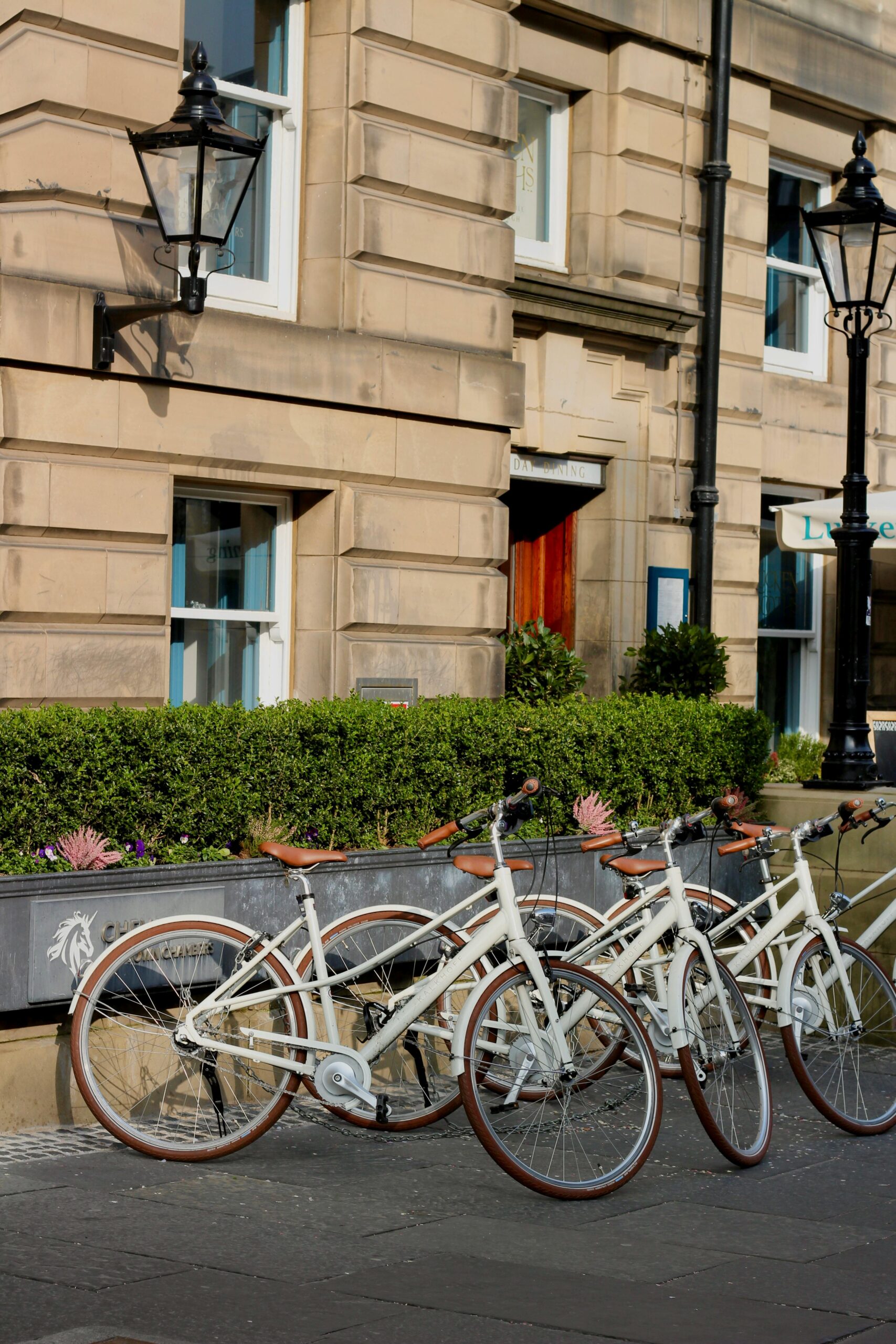Planning a trip between Scotland’s two most iconic cities? The Glasgow Edinburgh rail journey is one of the most popular and convenient ways to travel, but did you know it offers more than just a quick commute? Imagine whisking through stunning landscapes, historic landmarks, and vibrant cityscapes all from the comfort of your train seat. Why choose the road when the fastest train from Glasgow to Edinburgh can save you time and hassle? Many travellers doesn’t realise that this route is not only efficient but also packed with opportunities to explore hidden gems along the way. Are you curious about the best times to catch the train or how to score the cheapest Glasgow to Edinburgh train tickets? This journey is perfect for business travellers, tourists, or anyone keen to experience Scotland’s rich culture without the stress of driving. With frequent services, modern amenities, and scenic views, the train from Glasgow to Edinburgh is quickly becoming the preferred choice for commuters and adventurers alike. Ready to discover insider tips and must-know facts about this iconic rail link? Let’s dive into everything you need to know about travelling between Glasgow and Edinburgh by rail, ensuring your next trip is smooth, enjoyable, and unforgettable.
Why Glasgow to Edinburgh Rail Travel Is the Ultimate Scenic Adventure in Scotland
Travelling between Glasgow and Edinburgh by train is one of the most popular ways to get between these two Scottish cities, but honestly, the experience can be a bit of a mixed bag. If you are searching for Glasgow Edinburgh rail options, you are in luck because there’s plenty to choose from, though not everything always runs like clockwork, if you catch my drift.
First off, the journey itself is pretty straightforward — trains run quite frequently, sometimes every 15 to 30 minutes during peak times, making it super convenient. But, and here’s the kicker, the journey time can sometimes vary quite a bit. Normally, it takes about 50 minutes to get from Glasgow Queen Street to Edinburgh Waverley, but delays? Oh yes, they happen more often than you’d like to admit. Maybe it’s just me, but it feels like the trains are always running late at least once a week.
Train Operators and Services
There are mainly two operators running the Glasgow Edinburgh rail service: ScotRail and LNER (London North Eastern Railway). ScotRail is the more common choice, with most trains running the route. LNER offers some faster services, but they are less frequent and a bit pricier. Here’s a quick rundown of what you might expect:
| Operator | Average Journey Time | Frequency | Approximate Price (Standard) |
|---|---|---|---|
| ScotRail | 50-60 minutes | Every 15-30 mins | £12-£20 |
| LNER | 45-50 minutes | Every 1-2 hours | £20-£35 |
Not really sure why this matters, but if you’re in a rush, sometimes splashing out for LNER might be worth it. However, the cheaper ScotRail trains are generally reliable and comfortable enough.
Ticket Tips and Tricks
When it comes to buying tickets for the Glasgow Edinburgh rail journey, there’s a bit of an art to it. Advance tickets are usually cheaper, but the catch is they’re non-refundable if you change your mind. Also, off-peak tickets can save you a fair bit of money, but only if your travel time fits the off-peak hours, which might not always be convenient.
A quick list of ticket types you might encounter:
- Anytime tickets: Most flexible, but priciest
- Off-Peak tickets: Cheaper, limited travel times
- Advance tickets: Cheapest but fixed train only
Oh, and don’t forget railcards! If you’ve got a railcard, you can get up to a third off most tickets. Students, seniors, and families have options, and it’s well worth checking if you qualify.
Stations and Facilities
Starting your journey at Glasgow Queen Street or Glasgow Central? You’ll find Queen Street is the main hub for trains heading to Edinburgh. It has decent facilities — cafes, toilets, and even some shops. Edinburgh Waverley, on the other hand, is a massive station with plenty of amenities but can be a bit overwhelming if you’re not used to it.
Here’s a quick table comparing the two main stations for the Glasgow Edinburgh rail route:
| Station | Facilities | Accessibility | Nearby Attractions |
|---|---|---|---|
| Glasgow Queen Street | Toilets, cafes, seating, ticket office | Step-free access available | George Square, Buchanan Street |
| Edinburgh Waverley | Shops, cafes, luggage storage, toilets | Fully accessible | Princes Street, Edinburgh Castle |
Pros and Cons of Taking the Train
Maybe it’s just me, but I’ve always found that taking the train between Glasgow and Edinburgh has some clear ups and downs.
Pros:
- Quick and direct service
- Frequent departures
- No need to worry about parking or traffic jams
- Scenic views along the way, especially in the countryside
Cons:
- Can be pricey during peak times
- Trains sometimes delayed or overcrowded
- Limited luggage space if you’re carrying loads
- Stations can be busy and confusing for first-timers
Practical Insights for Your Journey
If you’re planning to catch the Glasgow Edinburgh rail service soon, here’s some practical advice that might help:
- Book in advance: If you can, grab your tickets beforehand online to save money.
- Travel off-peak: Avoid rush hour if you want a more relaxed journey.
- Check live updates: Train times can change, so always check the latest info on the day.
- Pack light: The train isn’t the best place for bulky luggage.
- Arrive early: Stations can get busy, especially Edinburgh Waverley, so don’t
Top 7 Insider Tips for a Seamless Glasgow Edinburgh Rail Journey Experience
Travelling Between Glasgow and Edinburgh by Train: What You Need to Know
If you ever find yourself needing to get from Glasgow to Edinburgh, you might want to consider the Glasgow Edinburgh rail option. Honestly, its one of the quickest and most convenient ways to travel between these two Scottish cities, but sometimes it feels like the trains don’t run on time or that services are packed like sardines. Not really sure why this matters, but I always find train journeys a bit more relaxing than driving, especially when you can just zone out and watch the countryside fly by.
So, what’s the deal with the Glasgow Edinburgh rail service? Well, the rail line connecting these two cities is one of the busiest in Scotland. Trains usually take about 50 minutes to an hour, depending on which service you catch. But beware, during peak hours, the trains can get so crowded that you might struggle to find a seat — that is if you didn’t booked your ticket in advance. Ticket prices also vary quite a bit; sometimes you can snag a bargain if you’re flexible, other times it feels like you’re paying through the nose.
Here’s a quick table that breaks down some typical journey times and train operators on the Glasgow Edinburgh rail route:
| Operator | Average Journey Time | Frequency (per hour) | Typical Ticket Price (One Way) |
|---|---|---|---|
| ScotRail | 50 mins | 4 | £12 – £25 |
| LNER | 55 mins | 1 | £15 – £30 |
| Avanti West Coast | 1 hr | 1 | £20 – £35 |
Not sure why LNER and Avanti even bother with this route when ScotRail is clearly dominating it, but maybe it’s just me.
If you’re thinking about hopping on the Glasgow Edinburgh rail, here are a few practical tips that might help. First, always try to book your ticket online before you travel. The ticket machines at stations can be a nightmare, with long queues or sometimes they just don’t work properly. Also, if you’re travelling during rush hour, prepare for crowds and maybe bring a book or earphones, because peace and quiet are not guaranteed.
One thing that often confuses people is the different stations in Glasgow and Edinburgh. Glasgow has several main stations like Glasgow Central and Glasgow Queen Street, but most of the Glasgow Edinburgh rail services depart from Glasgow Queen Street. Edinburgh’s main station is Edinburgh Waverley, which is pretty central and easy to get around from.
Why’s this important? Because if you mistakenly go to the wrong station, you could waste a lot of time and end up being late. It happened to my mate last week, who ended up at Glasgow Central instead of Queen Street. He was not impressed, to say the least.
Here’s a quick list of key stations on the Glasgow Edinburgh rail route:
- Glasgow Queen Street (main departure)
- Croy
- Falkirk High
- Haymarket (Edinburgh suburb)
- Edinburgh Waverley (main arrival)
If you’re a commuter or regular traveller, you might want to consider getting a railcard or season ticket. ScotRail offers some decent discounts for students, seniors, and young people. Not sure if it’s worth it if you only travel once in a blue moon, but if you’re on the train often, it will save you some pennies.
Now, let’s talk about the onboard experience. The trains on this route usually have free Wi-Fi, which is great if you want to get some work done or just scroll through social media. But sometimes the Wi-Fi can be patchy or just downright useless, which is a bit frustrating. Also, most trains have power sockets at the seats, so you can keep your devices charged – thank goodness for that.
Food and drink? You’ll mostly find vending machines or small cafes at the stations, but the trains themselves rarely have a full catering service. So if you’re hungry, better bring your own snacks or grab something before you board. Maybe it’s just me, but I always end up regretting not packing a sandwich.
To give you a better picture, here’s a comparison chart of the pros and cons of travelling by Glasgow Edinburgh rail:
| Pros | Cons |
|---|---|
| Fast journey times (under 1 hr) | Can get very crowded |
| Frequent services | Ticket prices can be high |
| Comfortable seating and facilities | Limited onboard catering |
| Central stations in both cities | Sometimes delays happen |
| Free Wi-Fi and power sockets | Wi-Fi quality varies |
If you’re wondering about alternatives to the Glasgow Edinburgh rail, there’s always the bus
How to Maximise Comfort and Speed on Your Glasgow Edinburgh Rail Commute
If you ever find yourself travelling between Scotland’s two biggest cities, Glasgow and Edinburgh, then you probably thinking about taking the Glasgow Edinburgh rail route. It’s honestly one of the most popular ways to get from one place to another, but not really sure why this matters, but the train journey offers quite a nice balance between speed and scenery. The rail line connecting Glasgow Edinburgh is pretty well-used and it’s not uncommon to find it busy, especially during the rush hours.
Now, I’m not saying it’s perfect, there’s always a small chance your train will be late or delayed, but overall, the Glasgow to Edinburgh railway line is quite reliable. The journey usually takes about 50 minutes if you catch the faster trains, but slower ones may drag on for an hour or so. It really depends on which service you’re taking.
Timetable Snapshot: Glasgow Edinburgh Rail Services
| Train Operator | Frequency | Journey Time | Peak Times | Off-Peak Times |
|---|---|---|---|---|
| ScotRail | Every 15 mins | 50 mins | 7-9 AM, 4-6 PM | 10 AM – 3 PM |
| LNER | Every hour | 45 mins | 6-9 AM, 5-7 PM | 9 AM – 4 PM |
The table above shows the basic timetable for the Glasgow Edinburgh rail options. The ScotRail trains are the ones most commonly used and honestly, they got a good number of services. LNER, on the other hand, is a bit pricier but usually slightly quicker. Maybe it’s just me, but I feel like paying extra for a few minutes more on the journey ain’t always worth it.
Ticket Prices and Options
Tickets can be a bit of a minefield to navigate. There’s single, return, off-peak, peak, anytime – the whole lot. And don’t even get me started on the railcards and discounts. Here’s a rough breakdown for a single journey between Glasgow and Edinburgh:
- Off-peak single: £12
- Anytime single: £20
- Advance (booked in advance): £8-£15 (depends on availability)
- Railcard discount: 1/3 off most fares
Honestly, if you’re travelling Glasgow Edinburgh rail regularly, it’s worth looking into a railcard because that can save you a lot. The 16-25 Railcard or Senior Railcard are popular choices. But beware, not all tickets are refundable or flexible, so if you change your mind or plans, you might lose your money.
Why Take the Train Between Glasgow and Edinburgh?
You might be wondering why people bother with the train when you can drive or take a bus. Well, for starters, the Glasgow to Edinburgh railway route is pretty quick and avoids the hassle of traffic jams, petrol prices, and parking fees. Plus, you get to chill out, read a book, or scroll your phone without worrying about the roads.
The scenery on the route isn’t exactly breathtaking compared to other parts of Scotland, but it’s not too shabby either. You’ll see some urban outskirts, bits of countryside, and if you’re lucky, maybe a hint of the Firth of Forth from afar. So, it’s a decent in-between, neither the best nor the worst rail journey in the UK.
Station Facilities: What to Expect
| Station | Toilets | Shops & Cafes | Wi-Fi | Accessibility | Parking |
|---|---|---|---|---|---|
| Glasgow Central | Yes | Plenty | Yes | Full | Yes |
| Edinburgh Waverley | Yes | Many | Yes | Full | Yes |
Both Glasgow Central and Edinburgh Waverley stations are pretty well-equipped. If you got time to spare, there’s coffee shops, convenience stores, and waiting lounges. The Wi-Fi works okay, though sometimes it drop out when it gets busy. Accessibility is good for those with mobility issues, but you might find the stations a bit confusing if you’re not used to big terminals.
Practical Tips for Travellers
- Get your tickets in advance if possible, especially during busy periods or holidays.
- Check the train times the day before, as there’s sometimes changes or engineering works.
- Arrive at the station at least 10 minutes early; some platforms change last minute.
- If you’re carrying luggage, be mindful the trains can get crowded so space might be tight.
- Consider downloading the rail operator’s app for live updates and mobile tickets.
Pros and Cons of Taking the Glasgow Edinburgh Rail
| Pros | Cons |
|---|---|
| Quick journey time | Can |
Exploring Hidden Gems Along the Glasgow Edinburgh Rail Route: What to See and Do
Travelling between Glasgow and Edinburgh by train is something that many people do every day, but not many realise just how interesting this route really is. The Glasgow Edinburgh rail service is one of the busiest in Scotland, and it has a lot more to offer than just a quick way to get from A to B. Maybe it’s just me, but I feel like the charm of this journey is often overlooked by those who just want to get there as fast as possible.
First off, let’s talk about the trains themselves. You’d think that in this day and age, all the trains would be modern and sleek, but nah, you still get some of those older models chugging along the tracks. Not really sure why this matters, but if you’re the kind of person who enjoys a bit of nostalgia, then you might enjoy the ride more than you expect. The Glasgow Edinburgh rail line is served primarily by ScotRail, and they run a pretty frequent service, roughly every 15 to 30 minutes during the day, which is handy if you’re the forgetful type who leaves booking tickets last minute.
Here’s a quick table that shows the typical journey times and ticket prices during peak and off-peak hours:
| Time of Day | Journey Duration | Ticket Price (One way) | Notes |
|---|---|---|---|
| Peak Hours | 50 minutes | £15 – £20 | Busier trains, less seats |
| Off-Peak | 55 minutes | £10 – £15 | More relaxed, cheaper fares |
| Weekend | 60 minutes | £12 – £18 | Sometimes engineering works |
I know prices can be a pain, especially if you’re travelling regularly, but thankfully ScotRail offers some season tickets and railcards that can reduce the cost quite a bit. If you’re commuting for work, it may worth getting one even if you don’t use the train every day.
One thing that always bugged me is the inconsistency of the service. Sometimes the trains run exactly on time, and other times, it feels like you’re stuck at the station for ages. It’s like the rail gods are having a laugh at our expense. The Glasgow Edinburgh rail connection is crucial for business and tourism, but delays and cancellations happen more often than anyone would like. Weather seems to play a big part, especially in winter when the Scottish weather can be as unpredictable as a cat on a hot tin roof.
Now, if you’re not from Scotland and thinking about doing this trip, you might want to know a bit about the stations themselves. Glasgow Queen Street and Edinburgh Waverley are the main hubs, and both have their own quirks:
- Glasgow Queen Street is smaller but more central to the city centre, making it easy to pop out for a quick coffee or a cheeky pint.
- Edinburgh Waverley is a massive, old station with stunning architecture, but can be a bit confusing to navigate if you’re carrying luggage.
Also, if you’re feeling adventurous, there’s a few alternative routes you can take. For example, you could catch a train from Glasgow Central to Edinburgh via Falkirk, which takes a bit longer but the views can be quite stunning, especially during autumn. It’s not the fastest way, but sometimes the slow road is the more enjoyable one.
Here’s a small list of practical tips for anyone planning to take the Glasgow Edinburgh rail:
- Book your tickets in advance to get the cheapest fares.
- Avoid travelling during rush hour if you can, unless you love sardine-can experiences.
- Check the live departure boards before leaving home; delays are more common than you’d think.
- Don’t forget to validate your ticket if you’re using a paper one, otherwise the conductor might give you a hard time.
- Bring snacks – not all trains have a cafe car.
- If you’re travelling with kids, try to get a seat in the quieter carriages to avoid the chaos.
One bit of trivia, for the train geeks out there: the Glasgow Edinburgh rail line was electrified back in the 2010s, which significantly improved journey times and reduced emissions. This was a big deal at the time, considering how the line was mostly diesel-powered before. But still, sometimes you see a diesel train popping up, which is a bit confusing like, why is that even happening?
Lastly, it’s important to mention the environmental benefits of taking the train between these two cities. Compared to driving, the Glasgow Edinburgh rail service produces significantly less carbon footprint per passenger. So, if you’re the eco-conscious type trying to reduce your impact, this is a no-brainer. However, I do wonder why more people don’t choose the train over the car,
Comparing Glasgow Edinburgh Rail Fares: Best Deals and Booking Hacks for 2024
Glasgow Edinburgh Rail: A Journey Worth Taking (Or Is It?)
Travelling between two of Scotland’s biggest cities, Glasgow and Edinburgh, is something that many folks do on a regular basis. You might think it’s a simple hop, skip and jump, but the Glasgow Edinburgh rail service has its quirks, and I’m not really sure why this matters, but sometimes it can be a bit of a rollercoaster. Whether you’re commuting for work, visiting family, or just out to explore, the train is usually the go-to option. But let’s dive deep into what makes this route tick, or maybe tick off some passengers.
Why Take the Glasgow Edinburgh Rail?
First things first, the distance between Glasgow and Edinburgh is roughly 47 miles (or 75 kilometres for those who prefer the metric system), which is just about right for a quick train journey. Not that driving is any better, especially when you factor in traffic jams that can turn a 50-minute trip into a two-hour nightmare. The Glasgow Edinburgh rail line, on average, takes around 50-60 minutes but sometimes it can be faster… or slower, depends on the day.
Here’s a quick table summarising the main features of the rail service:
| Feature | Details |
|---|---|
| Distance | 47 miles / 75 km |
| Average Journey Time | 50-60 minutes |
| Frequency | Every 15-30 minutes (peak) |
| Operators | ScotRail, LNER |
| Main Stations | Glasgow Queen Street, Edinburgh Waverley |
| Ticket Price Range | £10 – £25 (one way) |
Okay, so not bad, but sometimes the prices can be a bit steep if you book last minute. Maybe it’s just me, but I feel like the ticketing system could be more transparent. You can grab a ticket online or at the station, but the offers and discounts often confuse more than help.
Types of Trains on the Glasgow Edinburgh Rail Route
One of the things you might not realise is that the Glasgow Edinburgh rail service uses a mix of trains. The most common ones are the Class 385 electric trains, which are relatively new and supposed to be pretty comfy. However, if you get an older train, let’s just say it might feel like going back in time – creaky seats, dodgy air conditioning, the whole shebang.
Here’s a list of train types on this route and some quick pros and cons:
Class 385 Electric Trains
- Pros: New, faster, more comfortable
- Cons: Sometimes delays due to technical issues
Older Diesel Trains
- Pros: More frequent during peak times
- Cons: Noisy, less comfy, slower
LNER High-Speed Trains
- Pros: Fastest option, wifi onboard
- Cons: Pricier tickets, limited departures
If you’re lucky, you might catch the LNER option, but they don’t run as often on this route. So, if speed is your thing, better check the timetable carefully.
Ticket Types and How to Save Money
Not everyone has the luxury to splurge on train tickets, so here are some tips to save money on the Glasgow Edinburgh rail:
- Advance Tickets: If you buy early, you can snag some decent discounts. But beware, these tickets are usually non-refundable.
- Railcards: If you’re eligible (student, senior, disabled), these cards can save you about a third.
- Off-Peak Travel: Travel outside rush hours to pay less. However, the trains might be less frequent, so plan carefully.
- Group Tickets: Travelling with friends? Group discounts exist but aren’t always advertised well.
Honestly, sometimes it feels like you need a degree in rail economics to figure this all out. The websites are a bit all over the place, and the offers change so often you might miss out.
Stations to Know: Glasgow Queen Street and Edinburgh Waverley
The Glasgow Edinburgh rail route mainly runs between two stations: Glasgow Queen Street and Edinburgh Waverley. Both are pretty central, which is handy if you want to explore the cities right away.
- Glasgow Queen Street: Smaller than Glasgow Central but easier to navigate. Has cafes and little shops, though not as many as you’d expect.
- Edinburgh Waverley: Huge and bustling, located right in the city centre. Expect crowds, especially during festivals or rush hour.
If you’re carrying heavy luggage or pushing a buggy, be prepared for some stairs and escalators. Both stations have lifts, but they can be slow or out of order sometimes.
Practical Tips for the Journey
Here’s
Conclusion
In conclusion, the Glasgow to Edinburgh rail service remains a vital link between Scotland’s two largest cities, offering travellers a convenient, efficient, and environmentally friendly mode of transport. Throughout this article, we have explored the frequency of trains, the range of ticket options, and the modern amenities available on board, all of which contribute to a comfortable journey whether for business or leisure. Additionally, recent investments in infrastructure and rolling stock promise further improvements in speed and reliability, making rail travel an increasingly attractive alternative to road transport. For anyone planning a visit or regular commute between Glasgow and Edinburgh, embracing the rail network not only saves time but also supports sustainable travel initiatives. To fully benefit from this service, be sure to book tickets in advance and keep an eye out for special offers. Embrace the ease and charm of Scotland’s railways and make your next trip a seamless experience.













